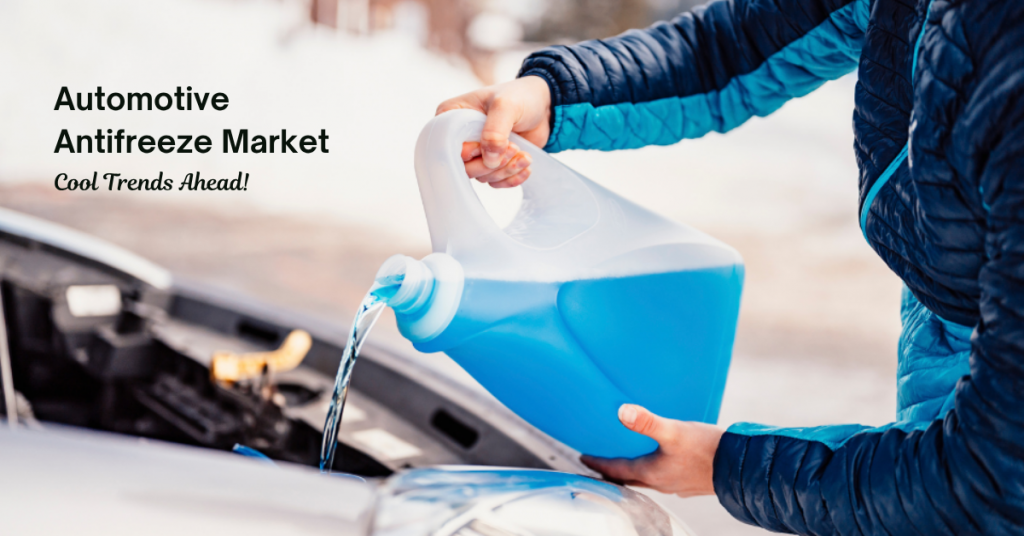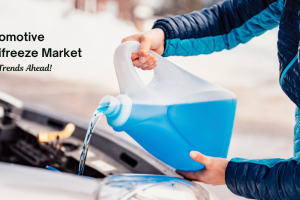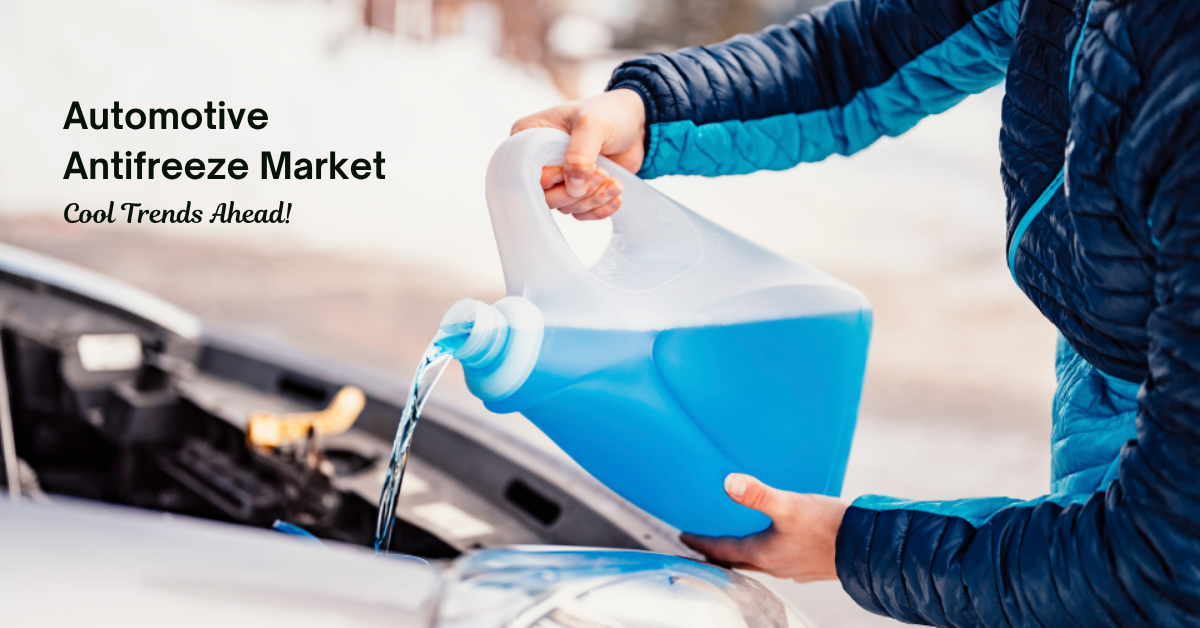
Market Overview
The Automotive Antifreeze Market is projected to grow from USD 4,420 million in 2024 to an estimated USD 5,957 million by 2032, expanding at a CAGR of 3.8% during the forecast period. Antifreeze plays a vital role in regulating engine temperatures and preventing freezing and overheating, ensuring vehicle reliability across diverse climates and usage patterns.
As global automotive technologies evolve, so do the performance standards expected from antifreeze solutions. The surge in global vehicle production, rise in consumer preference for long-lasting vehicles, and increasing adoption of electric mobility are pushing the demand for high-performance coolants. Furthermore, the increased awareness around vehicle maintenance and safety in both mature and emerging markets reinforces the role of antifreeze in enhancing engine longevity and efficiency.
Amid the shift toward sustainable automotive solutions, antifreeze manufacturers are under pressure to deliver environmentally friendly and efficient products. The integration of advanced chemical formulations and the introduction of specialized solutions for EVs and hybrids reflect the market’s transition toward cleaner, smarter mobility. This makes the automotive antifreeze sector a critical contributor to the overall health of the modern automotive ecosystem.
Get full details: https://www.credenceresearch.com/report/automotive-antifreeze-market
Market Drivers
Growing Vehicle Longevity and Maintenance Trends
Consumers are retaining vehicles longer, increasing the average age of the global car fleet. This trend promotes more frequent maintenance cycles, including coolant replacements, thus fueling demand for antifreeze. Increased awareness around engine health among individual vehicle owners and fleet managers further accelerates aftermarket sales.
OEM Pressure for Eco-Conscious and Durable Coolants
Automotive manufacturers are demanding advanced coolants that align with vehicle-specific needs and environmental standards. These include long-life and low-toxicity coolants that reduce environmental impact while delivering extended protection. This shift is driving innovation in antifreeze formulations to meet rising OEM expectations.
Rising Temperatures and Climate Variability
Climate change is increasing ambient temperatures across key regions, elevating the need for reliable cooling systems. Antifreeze solutions that offer better thermal stability and protection against extreme conditions are becoming essential. This weather-driven demand is particularly evident in regions like the Middle East and Asia Pacific.
Expanding Urban Fleets and Shared Mobility
With the growth of ride-hailing, leasing, and shared mobility services, there’s greater stress on vehicle engines. These high-mileage vehicles require more frequent servicing and coolant changes, creating a steady demand from commercial fleet operators for reliable and cost-effective antifreeze solutions.
Market Challenges
Stricter Environmental Norms on Chemical Usage
The environmental impact of antifreeze ingredients such as ethylene glycol has come under scrutiny. Regulatory bodies are imposing stricter limits on emissions and chemical toxicity, requiring manufacturers to invest in eco-friendlier alternatives and compliance measures.
Fragmented Global Standards
Lack of uniform antifreeze standards across regions leads to formulation mismatches and increased complexity in global distribution. Manufacturers must navigate diverse technical requirements, which inflates production costs and complicates global scalability.
Supply Chain Disruptions and Lead Times
Global supply chains for chemicals and packaging have faced disruptions due to geopolitical tensions and raw material shortages. Extended lead times and high logistics costs impact delivery timelines and increase overall production expenses.
Price-Sensitive Consumer Segments
In emerging markets, cost remains a decisive factor. Many consumers opt for lower-priced, locally produced coolants, even if quality is compromised. This limits penetration for premium antifreeze products, especially among independent vehicle owners.
Market Opportunity
Electrification of Commercial Vehicles
As the transition to electric mobility expands beyond personal vehicles, commercial EVs like buses and trucks will demand robust thermal management systems. This shift creates a lucrative opportunity for manufacturers offering EV-compatible antifreeze solutions with extended thermal range.
Customization and Brand Differentiation
Brands that offer customized coolant formulations based on regional climates or vehicle types are better positioned to build customer loyalty. Tailored product lines can differentiate companies in an otherwise commoditized aftermarket.
Growth in Online Sales Channels
The rise of digital auto parts retail offers antifreeze brands direct access to consumers and workshops. Online platforms allow better visibility, price comparisons, and technical information, empowering smaller players to compete with global brands.
Rising Focus on Sustainable Fleets
Corporations and municipalities are transitioning to green fleets. These organizations prioritize environmentally friendly and long-life coolants, opening doors for antifreeze suppliers with sustainable and certified product offerings.
Market Segmentation
By Product Type
- Ethylene Glycol-based Antifreeze
- Propylene Glycol-based Antifreeze
- Glycerin-based Antifreeze
- Others (Hybrid blends, Bio-based formulations)
By Technology
- Inorganic Acid Technology (IAT)
- Organic Acid Technology (OAT)
- Hybrid Organic Acid Technology (HOAT)
- Others (Phosphate-free, Silicate-free)
By Vehicle Type
- Passenger Cars
- Light Commercial Vehicles (LCVs)
- Heavy Commercial Vehicles (HCVs)
- Two-Wheelers
- Off-Highway Vehicles (Agricultural & Construction Equipment)
By Distribution Channel
- Original Equipment Manufacturer (OEM)
- Aftermarket
By End Use
- Automotive Manufacturers
- Service Garages
- Individual Vehicle Owners
- Fleet Operators
By Region
- North America
- Europe
- Asia Pacific
- Latin America
- Middle East & Africa
Regional Analysis
North America
The U.S. and Canada dominate due to cold climate zones requiring seasonal coolant changes. Growth is sustained by a large vehicle parc and strong aftermarket infrastructure. Mexico’s role in automotive manufacturing boosts OEM antifreeze demand.
Europe
Europe benefits from innovation and strict environmental regulations. Countries like France, Germany, and the UK lead with advanced vehicle tech and support for low-emission products. Sustainability-focused initiatives promote bio-based antifreeze use.
Asia Pacific
Home to the world’s largest automotive markets, Asia Pacific is driven by rising middle-class vehicle ownership, especially in India and China. Japan and South Korea lead in EV and hybrid technologies requiring next-gen coolants.
Latin America
The antifreeze market in Brazil, Argentina, and Chile is shaped by increasing urbanization and imports of mid-range vehicles. Affordability remains crucial, although interest in improved engine performance is gradually increasing.
Middle East & Africa
The region sees high demand for thermal management due to extreme weather. GCC nations prefer high-performance products, while Sub-Saharan Africa is witnessing rising vehicle ownership and infrastructure development, supporting aftermarket growth.
Top Companies
- AMSOIL Inc.
- BP p.l.c.
- Chevron Corporation
- Cummins Inc.
- ExxonMobil Corporation
- Fuchs Petrolub SE
- Motul S.A
- Prestone Products Corporation
- Recochem Inc.
- Shell plc
Future Outlook
- Development of universal coolants compatible across multiple OEMs will gain popularity for inventory optimization.
- Integration of antifreeze monitoring with telematics will improve predictive maintenance for fleets.
- Adoption of recycled and refillable coolant systems will rise due to environmental regulations.
- EV-specific thermal fluids will evolve rapidly as battery technologies advance.
- Greater investment in antifreeze R&D from chemical companies will drive patent innovations.
- Regulatory alignment across countries may standardize formulation guidelines over time.
- AI-based testing will enable real-time monitoring of coolant performance and degradation.
- Startups will enter the market with niche products targeting climate-resilient antifreeze needs.
- OEMs will increasingly opt for long-term antifreeze supplier contracts for consistent performance.
- Blending plants closer to end-user markets will reduce transportation emissions and costs.
Get full details: https://www.credenceresearch.com/report/automotive-antifreeze-market





